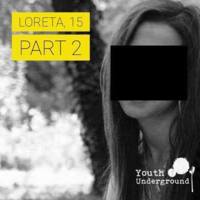
Loreta
There are an estimated 17,000 people living in modern slavery in Lithuania and 145,000 in Italy (GSI 2018). Lithuanian people are trafficked within the country and abroad. Men and boys are exploited in forced criminal activity such as shoplifting, and women and girls in commercial sex. Italy is a destination, transit, and source country for women, children, and men subjected to sex trafficking and forced labour. Victims originate from Nigeria, Romania, Morocco, China, and other countries. Female victims are often subjected to sex trafficking in Italy after accepting promises of employment as dancers, singers, models, restaurant servers, or caregivers. Romanian and Albanian criminal groups force Eastern European women and girls into commercial sex. Loreta experienced physical abuse as a child in a children’s home. She turned to drugs at thirteen years old. The only visitor she had at the home was a man who claimed to be her Godfather. He promised she could live with him when she turned fifteen and could legally leave the home. But he had previously raped her and when she was forced to live with him, her drug abuse increase. Shortly after, Loreta was trafficked into prostitution by a woman claiming to be her sister. When she was seventeen, she was told that pimp wanted to sell her abroad. She was taken to Italy. She was eventually able to escape after seeking help from a Lithuanian man who called the police.
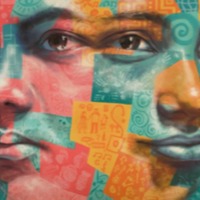
Maxim
There are an estimated 794,000 people living in conditions of modern slavery in Russia (GSI 2018). Forced labour remains the predominant form of human trafficking in the country. Labour trafficking has been reported in the construction, manufacturing, logging, textile, and maritime industries, as well as in sawmills, agriculture, sheep farms, grocery and retail shops, restaurants, waste sorting, street sweeping, domestic service, and forced begging. Many migrant workers experience exploitative labour conditions characteristic of trafficking cases, such as withholding of identity documents, non-payment for services rendered, physical abuse, lack of safety measures, or extremely poor living conditions. Maxim*, a 20-year-old man from Kazakhstan was bought as a child and trafficked to Russia. He met a man who promised to help him build a career fighting, but when he arrived in Sverdlovsk he was forced into an illegal fighting ring.
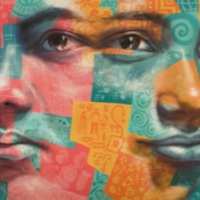
V.
There are an estimated 145,000 people liing in conditions of modern slavery in Italy (GSI 2018). Italy is a destination, transit, and source country for women, children, and men subjected to sex trafficking and forced labour. Victims originate from Nigeria, Romania, Morocco, China, and other countries. Female victims are often subjected to sex trafficking in Italy after accepting promises of employment as dancers, singers, models, restaurant servers, or caregivers. Romanian and Albanian criminal groups force Eastern European women and girls into commercial sex. V was thirteen years old when she was trafficked to Italy by a boy she believed loved her and who had asked her to marry him. Upon arrival in Italy, V was locked in a hotel room, raped, beaten and forced into prostitution. After three weeks of exploitation, V was arrested and deported back to Albania.
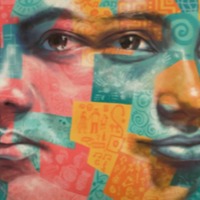
O.
There are an estimated 145,000 people living in conditions of modern slavery in Italy (GSI 2018). Italy is a destination, transit, and source country for women, children, and men subjected to sex trafficking and forced labour. Victims originate from Nigeria, Romania, Morocco, China, and other countries. Female victims are often subjected to sex trafficking in Italy after accepting promises of employment as dancers, singers, models, restaurant servers, or caregivers. Romanian and Albanian criminal groups force Eastern European women and girls into commercial sex. O.’s was forced to marry a man she did not know when she was 14-years old and move to Greece to live with her ‘husband’. She was subjected to physical abuse daily and left after 3 weeks. A neighbour promised to find her a job in Italy, where she travelled to illegally by boat. However, upon arrival she was forced into prostitution, beaten daily until she agreed to work on the streets. O. was able to leave her situation when the police caught her and took her to a centre for minors, where she stayed for a year and a half.
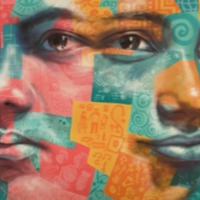
Kavya
Experts estimate millions of women and children are victims of sex trafficking in India. Traffickers use false promises of employment or arrange sham marriages in India or Gulf States and subject women and girls to sex trafficking. In addition to traditional red light districts, women and children increasingly endure sex trafficking in small hotels, vehicles, huts, and private residences. Traffickers increasingly use websites, mobile applications, and online money transfers to facilitate commercial sex. Children continue to be subjected to sex trafficking in religious pilgrimage centers and by foreign travelers in tourist destinations. Kavya was sexually exploited after leaving home to find money to help out her large family. Rather than seeking to escape sex work, she talks of helping her brothers to get an education.
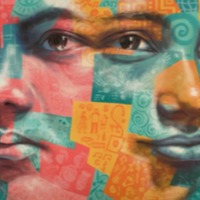
Anastasia
Despite having the lowest regional prevalence of modern slavery in the world, Europe remains a destination, and to a lesser extent, a source region for the exploitation of men, women and children in forced labour and commercial sexual exploitation. According to the most recent Eurostat findings, European Union (EU) citizens account for 65 percent of identified trafficked victims within Europe. These individuals mostly originate from Eastern Europe, including Romania, Bulgaria, Lithuania and Slovakia. In Albania and Bosnia and Herzegovina, the European Parliament has identified corruption and the judicial system as reform challenges towards accession talks within the EU. In Greece, the turbulent economic situation has increased vulnerability for populations seeking employment and livelihood opportunities. In Greece, unemployment reached 24.4 percent in January 2016 with a youth unemployment rate of 51.9 percent. The story told by “Anastasia” has elements of both sexual exploitation and domestic servitude perpetrated by her parents on her as a child.